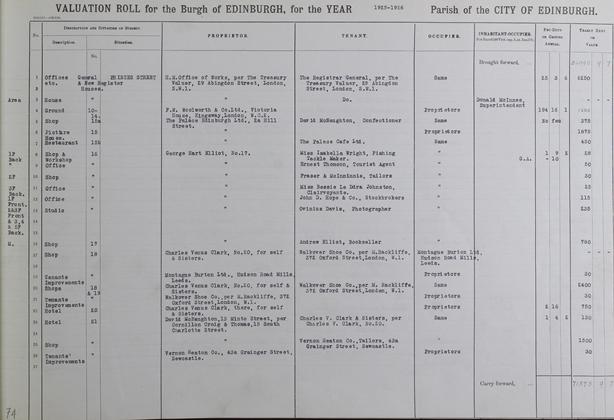The Lands Valuation (Scotland) Act, 1854 established a uniform valuation of landed property throughout Scotland, establishing an assessor in each of Scotland’s 35 counties and 83 royal and parliamentary burghs (eventually 90 burghs produced valuation rolls). The assessors compiled annual valuation rolls listing every house or piece of ground, along with the names and designations of the proprietor, tenant and occupier, and the annual rateable value. The rateable value was based on the annual rental value of each property (real, in the case of properties which were actually rented, or notional, in the case of an owner-occupied or otherwise unlet property).
Occupations of occupiers are frequently but not always included and valuation rolls rarely list any other residents in a property. For the early years after 1854, there is little detail about properties whose annual rental value was less than 4 pounds, unless they were on long leases.

An example of a valuation roll from the burgh of Edinburgh in 1925
Crown copyright, National Records of Scotland, VR100/499, page 74